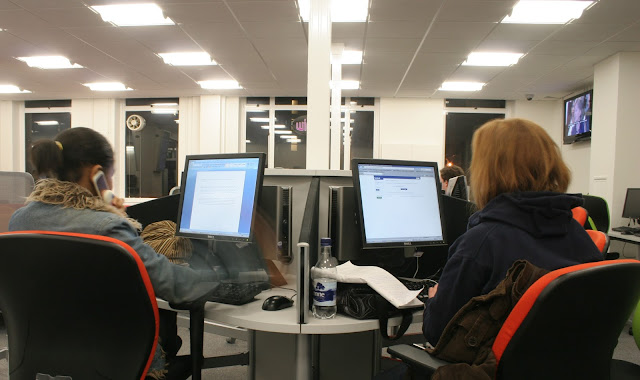TAG | thorn led panels
25
Bright morning light cuts stress in office workers
Comments off · Posted by admin in LED, LED panels

The subjects who received sufficient light – either daylight or artificial – to stimulate their body’s natural sleep-wake cycle, or circadian rhythm, were able to fall asleep more quickly at bedtime, and experienced better quality sleep.
Office workers who receive bright light in the morning have better sleep and lower levels of stress than those who receive low light levels, scientists have discovered.
The subjects who received sufficient light – either daylight or artificial – to stimulate their body’s natural sleep-wake cycle, or circadian rhythm, were able to fall asleep more quickly at bedtime, and experienced better quality sleep. They also reported lower levels of stress and depression.
The finding was consistent during both summer and winter. The scientists, working at the Lighting Research Center at Rensselaer Polytechnic Institute in New York state, recorded each subject’s daily circadian stimulus or CS, the calculated effectiveness of light’s impact on the circadian system. It ranges from 0.1, the threshold for circadian system activation, to 0.7, the response saturation.
The team, led by Dr. Mariana Figueiro, found that office workers receiving a morning CS of at least 0.3, regardless of source, had stronger circadian rhythms, than those receiving a morning CS of 0.15 or less.
At bedtime, participants receiving low CS lay in bed for approximately 45 minutes before they could actually fall asleep, which can lead to reduced sleep duration for those with a fixed wake time.
The study included 109 participants at five office buildings across America. Each study participant wore a Daysimeter, a research tool developed by the LRC in 2004, and used in frequent studies to measure the amount of CS a person actually receives, along with their activity patterns. Each participant was asked to wear the Daysimeter as a pendant for seven consecutive days during data collection periods in winter, between December and February, and again in summer, between late May and August. Data collection was conducted between 2014 and 2016.
‘Our study shows that exposure to high CS during the day, particularly in the morning, is associated with better overall sleep quality and mood scores than exposure to low CS,’ Figueiro told Lux. ‘The present results are a first step toward promoting the adoption of new, more meaningful metrics for field research, providing new ways to measure and quantify circadian-effective light.’
‘We are supporting this type of research so we can learn more about the connections between lighting and health,’ said Bryan Steverson with GSA. ‘The data from this research will help support our efforts in developing new lighting practices that can optimize health benefits for federal employees working in our federal buildings.’
The results will be seized on by proponents of so-called human-centric lighting, in which artificial lighting levels and colour are manipulated during the day to better harmonise with our natural circadian rhythms.
600x600 panel · circadian lamps · daylight · led panels · mege led panels · Novel Energy Lighting · office led · office lighting · thorn led panels

